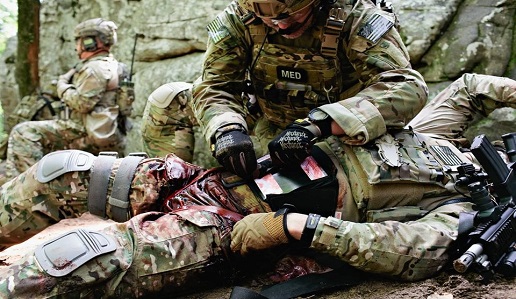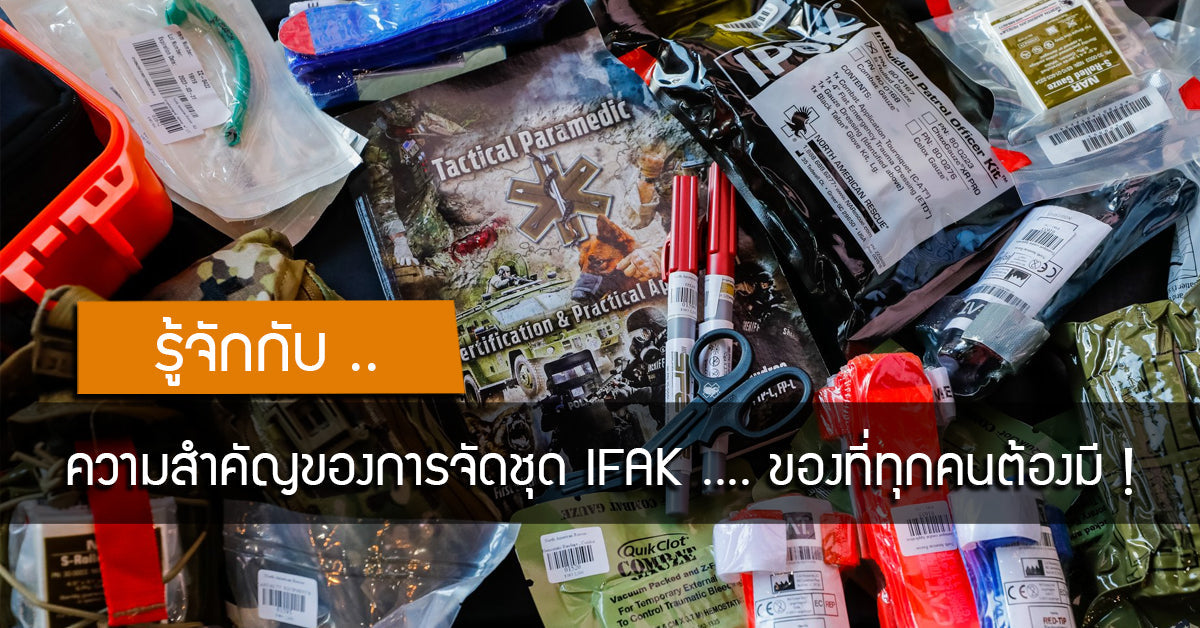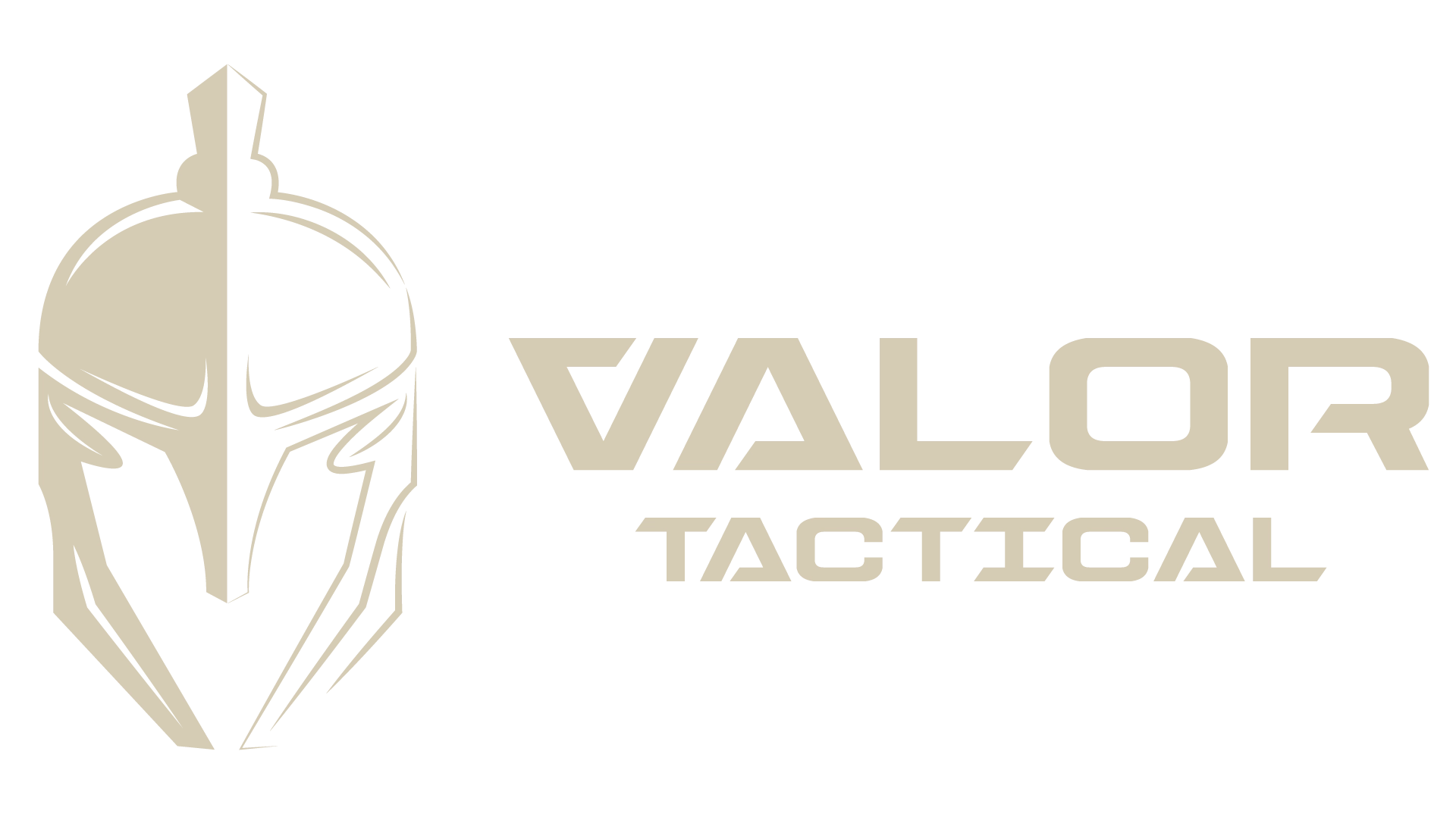Many people might think of a nurse's bag or a nurse's uniform.
A mobile medical equipment storage unit

When we talk about this topic, it may seem like a far-fetched idea.
Or even the classic belief that "We are not doctors."
Those things are for field medics/medics to carry."
To sentences like "There's a lot of this stuff, it's in the way."
Plus, I don't know how to use it. I won't carry it."
... but for those who have actually experienced this event, I believe that many people
I didn't think that way or I thought that way but immediately gave up on the idea.
The moment you become part of a real clash
Or encounter real events right before your eyes...
A sentence that I often hear from people who have experienced these events.
That's the saying, "Everything happens so fast.
So fast that I don't know what to do." Including phrases like
"If I had known... I would have brought it with me."
Which leads to the final conclusion that
"Some things are better left unused than used and not having them."
Yes, and today I will take everyone to learn more about the IFAK set.
That in reality, it's not just a big medical bag that has to fit everything in it.
Then put the Red Cross stamp on it and say, "Here it is... I have the items ready."
But in the end, it's all about your mindset and experience.
That should be used in preparing a set of IFAK bags. If you are ready, let's take a look! 
Let me recap the first steps of organizing a Loadout.
Before going out on a mission, referring to the principles of practice
Of world-class special operations officers
The best advice is that we must first know what kind of mission we are going to do.
And what kind of situations are possible to encounter?
Therefore, Loadout will be divided into 3 main parts, which are ....
First Line Gear: The most basic equipment for the mission.
Where we have to clash or encounter various situations
Therefore, the equipment you bring should focus on mobility. You should only bring necessary items.
Second Line Gear: This will be a device that is an extension of the first set.
It may be suitable for use in cases where we are supporting operations.
The equipment to be taken will focus on assessing the possible risks that may occur.
At this point, we still need mobility, but with more specialized equipment.
The design principle is to support the frontline operations team.
If a problem occurs or we have to continue to be a support team with the first team, etc.
Third Line Gear : is a device for the rear support system.
Focus on equipment to support all possibilities
The thing about this mission is that we're confident that we're not a team.
To enter into a direct confrontation but will be a prepared team
When something goes wrong, we are the ones who come to fix that problem.
Or help in the evacuation and retreat of the forward operations team.
To support sets, etc.
Well… at this point, some of you readers might be wondering.
Say, "Why do we have to talk about Loadout management?
With the article on organizing a first aid kit with "
I was about to say, "It's very relevant."
Because I'm going to ask everyone back that
"What is your real job role?
And what kind of Loadout do you guys have nowadays? "
Does it really fit the description of our mission?
Or are all 3 types prepared? Or are they still arranged in this way?
"One outfit for every event"?
And in the words of medical equipment that we have heard and seen,
"You're looking at it as a specialized device.
Is it only in Third Line Gear?
If the answer is yes, then congratulations.
It's time to repack your bags...

In fact, you don't need to carry everything.
Or stuff every tool into every mission, because eventually you'll learn it yourself.
That some of the items are heavy... definitely not usable in all mission possibilities.
.. and waste energy in transportation unnecessarily
But if you understand and have more experience,
You will know what you need to prepare.
And what is really necessary that should be taken?
This principle is no different from preparing a personal first aid kit.
You don't need to put every piece of nursing equipment on the shelf.
You don't have to carry everything like a field medic.
You should only have what you need, based on your missions and experiences.
Just that you don't have to be shot first to equip an IFAK.
But you can organize it by referring to "Training Experience
and your own understanding of first aid training for injured persons."
And today we will focus on organizing a first aid kit.
First Line Gear for Frontline Operations Teams
Which I believe is the most important point and the one that most people are curious about.
To the point where most people misunderstand it as well. 
Many people may be familiar with IFAK and see that the main problem is
"There's so much!!!" So much that I don't know what to buy or how to organize it.
Even there are hundreds of ready-to-use sets available. Which one should I buy?
First of all, for the First Line Gear IFAK set
Or the frontline operations team or incident response team, what I would like to give to everyone
Remember clearly that is ...
"It's not a tool for other people. It's yours. It's for you to use on yourself.
Designed specifically to save your life, just you, no one else.
It's not intended to be a field hospital or anything fancy at all!"
So it doesn't matter if you have all the pieces like a mobile hospital and that's it.
No matter how good something is, if you don't know how to use it, it will be of no use. So, what should you have?
It is something that is essential and of course you have to use it well!
Your IFAK kit should consist of the most basic equipment.
As far as you know, to save your own life and of course.
You have to learn how to use it! If you haven't learned it before,
Or do you still think that these things are not important to learn?
Try asking yourself this question:
"Are you a real movie star in this world?"
If you weren't, do you think you'd be shot if there really was a shooting?
It seems like a 50-50 chance, doesn't it? You think you'll never get shot, don't you?
And let me ask you, if you were the unlucky one who got shot,
"Who will help you?"
And it's not just about being shot, because everyone isn't in the middle of a barrage of bullets all the time.
But everyone has an equal chance of having an accident if that happens.
Even you yourself can't help yourself.
"Who will help me?"
At this point, if you haven't studied it yet, I recommend that you give it a try.
Or if you have studied a bit and started packing your own IFAK bag
Let's look at the next important topic.

What is the most important part of the IFAK internal device?
Then let's sort it according to the statistics.
In the death of an officer on the battlefield or in a conflict
More than 85% of deaths are due to blood loss.
( Massive hemorrhage ) Simply put, the bleeding cannot be stopped.
Until all the blood is gone.
And another 9% is death due to
Respiratory conditions such as obstruction, chest wounds
Or there is a condition of air/fluid in the pleura, causing inability to breathe.
It can take oxygen to the brain, eventually leading to death.
And the final 6% are those who died.
Hitting a vital part of the body
At that point, there is nothing we can do. We may have to let it go.
After seeing this brief statistical data, I believe that everyone might
Now that we have a picture, here are some things we definitely need in our IFAK kit.
It is the device that reduces the chance of death the most.
That's a tool that helps stop bleeding!! 
And in stopping the bleeding, there will be another question as well.
Is a tourniquet enough?
At this point, we may need to continue with the following:
" Do you have enough hemostatic equipment?
Has it been used in all parts of the body yet? "
Tourniquets are designed to be very useful.
With injuries in the arm or leg area, especially if it is a tourniquet
The ones that are certified and have standards will have more advantages in terms of usability.
Very easy and fast, and very strong too.
But what if our wound doesn't occur on our arms/legs?
Remember that the largest and most likely to get hit is the part
That's our torso, and if we get shot in that spot,
What should we use to stop the bleeding if a tourniquet is used?
Not available at that location?
We have to thank the current world for its great development.
Especially with first aid kits that have been collected data.
And certified by CoTCCC, we have a blood-stopping device.
More and more new types are coming in, such as new tourniquets.
To gauze that contains a hemostatic agent that makes stopping the bleeding much easier.
After we have a starter kit of hemostatic devices,
From now on, the next devices will be much easier.
If the reader wants a rough guideline on which items to get
What is it used for? I would like to provide this picture to help you make a purchase.
First aid equipment to meet your needs. 
If you, the reader, are just starting out with preparing your IFAK bag set,
The best advice is not to wait and buy everything at once.
You can start with the most essential items first.
This blood-stopping device is a very good start.
No one will say anything if all you have in your pocket is a tourniquet.
With just gauze, if that's what you consider most important.
And you have to have it at that time. You have to have this first and then you can build on it.
You can keep buying more when you have the chance or when you gain more training experience.
Because when you wait until the item is in stock before buying,
It may be too late.. It may not be bought at all..
Or even when you want to buy it, it suddenly runs out.
So, let's focus on our lives first. If we see that something is important,
Buy that piece and keep it for now. Think of it as emergency life insurance.
We can do it ourselves. 
But what you have to be careful about is that some people may make mistakes by trying.
Stuff everything into your own IFAK bag
This includes ibuprofen , which is used as an anti-inflammatory.
, sunscreen or common medicines because I think it's a medical bag.
And you end up having to carry a big bag back and forth.
It made me feel inconvenient and I ended up stopping carrying my nurse uniform.
Remember that ...
Don't put them together! IFAK kits are first aid kits that are used to save lives.
It's not a small medical cabinet if you need to store those things.
It is better to keep it in a separate compartment as a first aid kit or keep it in a backpack.
As mentioned earlier, we are packing a medical kit.
First Line Gear level is "You only wear what you really need."
So what you should choose is to organize with a focus on
"Items that are really necessary to use in case of an emergency" would be best.
And in addition to the IFAK bag set, we organize it by equipment
That we think is necessary, including the knowledge of how to use it.
The next thing to think about is the position.

There is no fixed formula for the placement of IFAK bags.
Or a specific position that clearly states what "must be done"
Because it depends on us, at most it's the team level.
(Some operational teams choose to designate locations
All nursing equipment must be in the same position for the entire team.
To make it easy to grab and use in case you need to help.
Injured team members)
But the only advice we can give you is:
You have to test it yourself: "
You can access your medical bag with both hands.
Or in every situation? 
In earlier times, officers preferred to place their medical bags on the sides of their vests.
On the non-dominant arm side, for two simple reasons:
1. It is located in the least important position of the body.
Because we choose to use the dominant arm to attach the gun holster.
Or maybe it's used to hold more important things?
2. It can still be used with either hand.
It's even easier with your non-dominant hand because it's closest to you.
Or else, you can reach out with your dominant hand and still grab it.
No problem either.
Asked if this belief is wrong? It is not wrong.
Because it's all about skill. But try to imagine that...
If an IED explodes or we are shot and our organs are torn apart,
At that point, can we use it in that position?
There are many case studies from battlefields around the world.
After that, we started to see many people choosing to adjust their positions.
More, whether it's in the front or attached to a belt instead of something like that.
But as I said, there is no magic formula, the best advice is…
That is, let us try installing and testing the usage in every position.
In all likelihood, at that point I believe you
You probably already have your own answer.
You can try a simple test like:
Experimenting with using nursing equipment in various positions as follows ..
- Pick up from your dominant/non-dominant hand, one hand, in a standing position.
- Pick up from your dominant/non-dominant hand, one hand, while sitting.
- Pick up with your dominant/non-dominant hand, one hand, while lying face down.
- Pick up with your dominant/non-dominant hand, one hand, while lying on your back. 
However, there are still many details to consider when organizing a first aid kit.
And there are many more recipes for you to try, but the most important thing is
It is a principle of practice and selecting equipment that is appropriate for your own mission.
Choose from the things we are sure we can use. Choose the most essential things first.
Test until you are sure that you can use it without any problems.
And in the future, when we have all the equipment, we may think about other possibilities.
Adding more, for example, having 1-2 extra tourniquets.
Some people may choose to carry more than one tourniquet for the following reasons:
1. In case the first line is damaged or broken, you will have a backup.
2. Prepare in case you need to help others.
Or even a spare IFAK set to keep in your car, EDC bag, or at home.
Everything comes from the continuation of experience and knowledge.
That we receive through training or from direct experiences we encounter
I hope you all will benefit and find a way.
For your own personal IFAK bag set.
At least have a set of these items. It will be much more comfortable.
You can buy the complete set or buy them piece by piece.
It depends on your needs first. It all depends on your experience.
and the necessity of use. See you next time.
----------------------------------------------------
More information :
Individual First Aid Kit (IFAK) - What do you really need? | SOFREP
The Direct Injury Care Pouch - The IFAK Redefined | SOFREP
Author / Arranged by: Ronnakrit " Viking " Sripumma
On April 16, 2021


